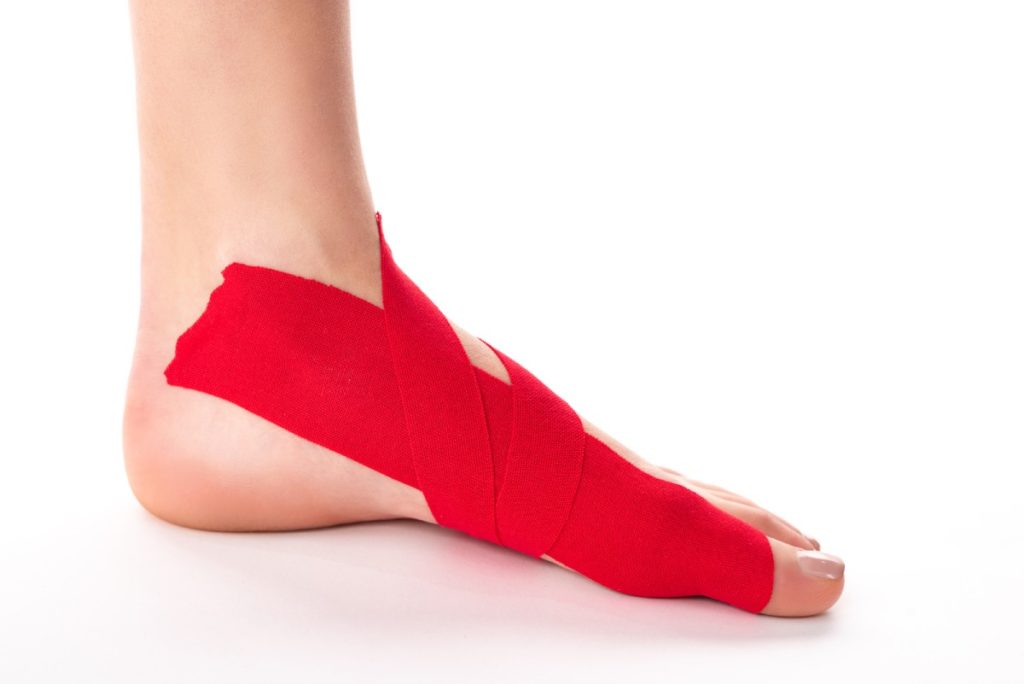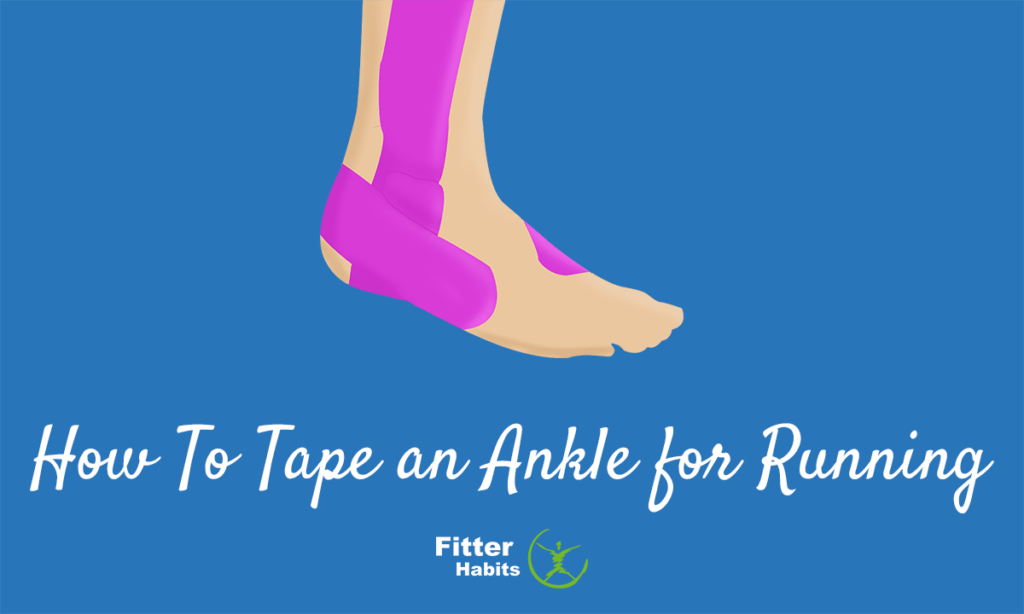Taping your ankle when you incur a running injury is a useful way to provide the area with the necessary support. Learn about a common taping method to ensure that you know how to tape an ankle for running injuries.
Taping your ankle when you incur a running injury is a useful way to provide the area with the necessary support.
Although there’s no doubt that you’re less likely to suffer from a running injury if you follow a sensible training program and don’t overtrain, injuries can unfortunately still happen. Jogging injuries often occur in the knees and the area below — especially the ankles. In this article, we provide some guidelines on how to tape an ankle for running injuries.
Contents
When Do You Need To Tape an Ankle for Running?

Apart from your knees and hips, your ankles are the body parts that take the most strain when you go for a jog. This is because they absorb a force that’s nearly three times your body weight every time your foot hits the surface.
It comes as no surprise, then, that runners can suffer from various ankle conditions. These include Achilles tendinopathy, which is an overuse of the Achilles tendon, and peroneal tendinopathy, which is a tendon injury that causes pain on the outside of the ankle. Although each ankle condition has various causes and treatments, ankle-taping typically forms part of an effective treatment plan.
Apart from these repetitive-use injuries, joggers can also sprain their ankles, especially when they do trail-running. As is the case with treatment for repetitive-use injuries, taping a sprained ankle can be very beneficial during the recovery process.
What Are the Benefits of Taping an Ankle?
Taping an ankle after an injury helps with alignment, reduces swelling and pain, and also provides much-needed support. Although current research isn’t conclusive, some studies show that when Kinesio tape is applied correctly, it lifts the skin slightly. The small space that this creates between the muscle and connective tissue, increases lymphatic drainage and blood flow.
Apart from using ankle-taping as part of a comprehensive recovery plan, some runners also choose to tape their ankles as a preventative measure. If, for instance, you’ve sprained your ankle multiple times before, taping it before a trail run or a marathon will provide additional stability and support and can help to prevent another sprain.
How To Tape an Ankle for Running
For ankle-taping to be effective, you need to apply the tape properly so that it will hold and also provide you with the necessary support. There isn’t just one “right” way, though. Various taping methods exist, so you opt for one that works for you. Here’s an example of a common Kinesio taping method that you can apply if you have an ankle injury:
- Place your ankle in a neutral 90-degree position. Tear off a strip of tape and twist and remove the paper backing off the one end to create an anchor.
- You then want to determine where precisely to place the strip. Do this by placing the non-sticky end on the inside aspect of your heel and then guiding the strip around your heel and up the outside of your ankle without stretching it.
- Apply the sticky bit at the spot where the end of the strip lands, which will be about two to three inches above your ankle, and then remove the backing paper from the strip until you have about an inch left to hold. You now want to create a stirrup by stretching the tape and pulling it over your heel and up the inside of your ankle. Once you’ve reached the endpoint of the strip, remove the last bit of the backing paper and apply without stretching the tape.
- Take another strip of tape and once again create an anchor by tearing off about an inch of the backing paper. Place the sticky bit on the inside of your foot, about an inch from the big toe, and then remove the remaining backing paper until you have about an inch left to hold. Stretch the tape and apply it along the inside of the foot, around the back of the heel, and then back under the foot, just in front of the heel. Remove the last bit of the backing paper and secure the endpoint on the inside of the foot without stretching the tape.
- You now want to repeat this step by starting on the opposite side. Create an anchor and then apply it on the outside of the foot near the base of your little toe. Stretch the tape as you apply it on the outside of the foot, around the back of the heel, and then back under the foot, just in front of the heel. Remove the rest of the backing paper and lay the end down, which will be on the outside of the foot.
Here’s a tutorial you can look at, as a visual demonstration will help you gain a better understanding of how to go about correctly taping your ankle.
Final Word on How To Tape an Ankle for Running
Taping your ankle when you’ve incurred an ankle injury should form an essential part of your recovery program. It’s vital, however, that you apply the tape correctly. If you tape your ankle too tightly, for instance, it can cause tissue damage. Conversely, if your ankle isn’t taped tightly enough, your ligaments won’t get the support they need.
Correct taping will provide the necessary stability your injured ankle needs, without decreasing circulation or restricting the range of motion. If you’re unsure about how to tape your foot, rather consult a medical professional.
FAQs About How To Tape an Ankle for Running
Should I Always Tape a Wear Ankle Before Running?
Although you want to tape an ankle to provide you with the necessary support after an injury, you should not rely on tape in the long run. Doing so can actually be harmful, as taping reduces natural feedback cycles, which can lead to new injuries.
Also, you want to determine the cause of your ankle injury as opposed to continuing to merely treat the symptoms through taping.
What Is the Difference Between Athletic and Kinesio Tape?
Athletic tape restricts movement as it doesn’t stretch, which means it provides more stability for an injured ankle than Kinesio tape does. Since this type of tape negatively affects circulation, it should only be worn for short periods of time. Kinesio tape, on the other hand, is stretchy and allows for movement.
Because it doesn’t restrict circulation, you can wear it for much longer than athletic tape. It’s also waterproof, so you can shower or bath with the tape on. For runners, Kinesio tape is typically the tape of choice.



